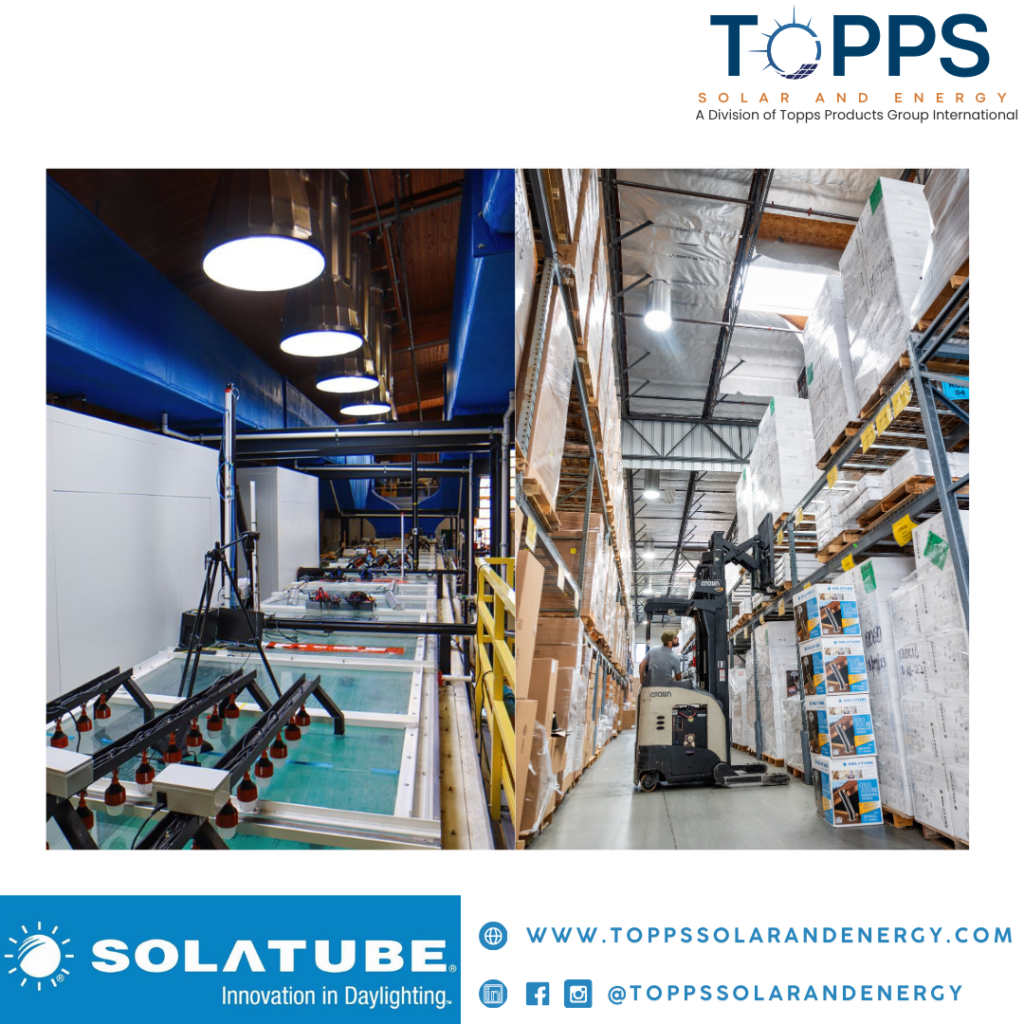
How Industrial Plants are Unlocking New Levels of Efficiency with Tubular Daylighting
Imagine an industrial facility where harsh artificial lighting is replaced by the natural, comforting glow of sunlight streaming through strategically placed tubular daylighting systems. Workers are energized, maintenance costs plummet, and sustainability goals are met with ease. Sounds ideal, doesn’t it?
For decades, industrial plants have relied heavily on artificial lighting, often compromising energy efficiency and workplace ambiance. However, a breakthrough in optical daylighting technology is turning this narrative on its head. Tubular daylighting solutions are emerging as a game-changer for industrial facilities, offering a trifecta of benefits: enhanced operational efficiency, lower energy consumption, and a more sustainable approach to lighting.
In this article, we’ll explore how tubular daylighting is transforming industrial plants, the key benefits it provides, and practical ways facility managers can incorporate these systems into their infrastructure.
Why Tubular Daylighting is Taking Center Stage in 2025
1. Redefining Efficiency in Industrial Spaces
Industrial plants are vast, often windowless facilities that require extensive artificial lighting. This results in skyrocketing energy bills and maintenance issues. Tubular daylighting solves these problems by introducing natural sunlight into the heart of these structures.
Here’s how it works: Tubular daylighting systems use advanced optical technologies to capture sunlight through rooftop domes, channel it through highly reflective tubes, and diffuse it into interior spaces. This setup minimizes energy usage while ensuring consistent, high-quality illumination throughout the day.
But the benefits don’t stop at energy savings. By reducing dependency on artificial lights, tubular systems eliminate the frequent maintenance required for traditional lighting fixtures. Moreover, these systems mitigate roof leaks—a common issue in industrial facilities caused by poorly installed or outdated skylights.
2. Enhancing Worker Productivity and Well-Being
Natural light isn’t just an energy-saver; it’s a productivity booster. Studies consistently show that exposure to natural daylight improves mood, cognitive function, and overall well-being. In industrial settings, this translates to happier, healthier, and more engaged workers.
Consider an assembly line worker spending 8–12 hours under artificial lighting. The fluorescent glare can lead to eye strain, fatigue, and even headaches. Introducing natural light into the workspace alleviates these issues, creating a more comfortable and productive environment.
A case study from a manufacturing plant in Texas revealed a 15% increase in worker productivity after installing tubular daylighting systems. Employees reported feeling more alert and motivated, while management noted fewer errors and reduced absenteeism.
For facility managers aiming to foster a positive work culture, tubular daylighting is an investment that pays dividends far beyond the initial installation cost.
3. Sustainability: Meeting the Green Building Challenge
As the global focus on sustainability intensifies, industries are under increasing pressure to adopt eco-friendly practices. Tubular daylighting aligns perfectly with green building certifications like LEED (Leadership in Energy and Environmental Design) by significantly reducing a facility’s carbon footprint.
Here’s why tubular systems are a sustainable choice:
- Energy Savings: By replacing artificial lighting with daylight, facilities can reduce electricity consumption by up to 80%.
- Lower Emissions: Reduced energy usage directly translates to lower greenhouse gas emissions, supporting global climate goals.
- Recyclable Materials: Many tubular daylighting systems, including those from Topps Solar and Energy, are made from recyclable components, further minimizing environmental impact.
By integrating these systems, industrial plants not only meet regulatory requirements but also position themselves as leaders in the green economy—an increasingly important factor for investors and consumers alike.
Practical Tips for Implementing Tubular Daylighting
Ready to bring the benefits of tubular daylighting to your industrial facility? Here are some practical steps to get started:
- Assess Your Lighting Needs: Conduct a thorough analysis of your facility’s lighting requirements. Identify areas with high energy usage or poor lighting conditions.
- Partner with Experts: Work with experienced providers like Topps Solar and Energy to design and install a system tailored to your facility’s unique needs.
- Combine with Smart Controls: Maximize efficiency by integrating tubular daylighting with smart lighting controls. These systems can automatically adjust artificial lighting based on natural light availability.
- Start Small: If a full-scale installation feels daunting, start with a pilot project in one section of your facility. Monitor the results and expand based on the initial success.
The Topps Solar and Energy Advantage
At Topps Solar and Energy, we specialize in cutting-edge tubular daylighting solutions designed to meet the unique challenges of industrial environments. Our systems are not only energy-efficient but also durable, leak-proof, and tailored to maximize productivity and sustainability.
Whether you’re an architect designing a new facility, a contractor retrofitting an existing structure, or a business owner looking to reduce operational costs, our team is here to help you integrate sustainable energy solutions seamlessly into your infrastructure.
Invest in the Future of Industrial Lighting
Tubular daylighting is more than a lighting solution—it’s a pathway to a more efficient, sustainable, and productive industrial future. By harnessing the power of natural sunlight, you can reduce energy costs, enhance worker well-being, and contribute to global sustainability goals.
Ready to transform your facility with tubular daylighting? Contact Topps Solar and Energy today to schedule a consultation, or subscribe to our newsletter for more insights into the latest trends in sustainable architecture and energy solutions.
Let’s work together to build a brighter, greener future—one beam of sunlight at a time.
